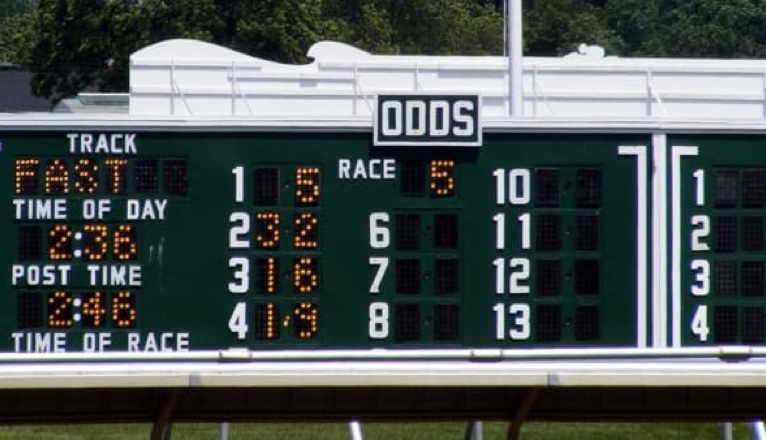Tote Systems
The tote (short for totalisator) is a betting system ubiquitous around the world. Different countries exhibit varying degrees of use of the tote, but it is by and large present in some form or another.
The tote is essentially a pool betting system whereby the weight of money for a selection in a contest determines the returns for each runner. In this guide, we cover everything from when the first tote was first conceived and how it works to the pros and cons of using the popular betting system.
Keep reading to learn more about tote systems.
Bookie of the Month
The History of the Tote

The tote was first conceived in the 1860’s in France by Joseph Oller, whose concept the ‘Pari mutuel’ is still used for horse racing in France today.
The operators of the system total up all of the bets placed on an event, deduct their commission (which is normally a percentage of the pool), and then apportion the remaining pool funds to the winning bets. Obviously the larger or smaller the stakes placed on a horse in relation to the size of the pool, then the larger the dividend will be and vice versa.
The majority of tote systems are used for events such as horse racing and greyhound racing (which are short in duration), and for lotteries.
As could be expected in the 19th century, the first tote systems were operated manually, with the total number of bets struck often recorded using chalk on a slate.
However, with no electronic form of recording, there was sufficient opportunity for unscrupulous bookmakers to manipulate the pools and commit fraud, as weight of money for each selection could be falsely inflated to reduce the pay-out to winning punters. As bets would be struck close to the race time, bookmakers could use the excuse of not having time to tally up prior to the conclusion of the contests.
The problem of honesty and reliable returns was somewhat solved in 1909 when an English inventor by the name of George Julius, developed and patented the first tote machine in New Zealand.
Julius’ design was first implemented at Ellersie racecourse in Auckland in 1913, and involved a sizeable board with large figures that were controlled by 900 wires.
The board could accommodate 30 horses and when bets were struck, the wires (which were connected by pulleys) would be pulled and would change the figure displayed on the board.
Due to the physical size of the unit and the cost, only the larger racecourses such as Longchamp and greyhound tracks such as (the now defunct) White City in London, were initially able to afford the mechanical boards.
Technological advancements meant that smaller and cheaper machines could be produced, and subsequently an increasing number of racecourses installed tote boards over the preceding years. In the early 1970’s, computers generally replaced the more cumbersome machines and today everything is operated electronically.

How the Tote Works
Let’s take an example from the Tote, which is the UK’s totalisator system, used for horse racing. The current deductions from the Tote are 16.5%, and we will use a six-runner race with a pool of £40,000 to demonstrate the calculations that produce the dividend.
The figures next to each horse represent the amount that has been staked on the runner:
- Horse A – £8,000
- Horse B – £12,000
- Horse C – £2,000
- Horse D – £6,000
- Horse E – £1,000
- Horse F – £11,000
Which Countries Use the Tote?
The above example demonstrates the UK’s use of the tote, but in reality it is one of the few countries in the world where the pari-mutuel style system is not the primary outlet for betting. Fixed fractional odds are embedded within the UK’s betting culture and whilst the tote concept is popular for jackpot style pools where several horses have to be selected and win for the customer to be rewarded, on a race to race basis it is not nearly as prevalent.
France adopt the PMU (Pari mutuel urbain), which is a state-controlled tote monopoly.
With over 10,000 sales outlets in France and the ability for customers to place their bets via telephone, internet or on a mobile, it is no surprise that PMU are the biggest horse racing tote operator in Europe and the second biggest in the world.
Tote systems are also exclusively used in the USA at racetracks. In the middle of each track is a large board which displays the current dividend for each runner based on the pool size. Returns in the USA are calculated to a $2 stake, and punters can wager on straight win bets, combination exactas, trifectas, etc.
Other countries with a strong passion for horse racing such as Hong Kong and Japan, stick to a form of a tote system for their principle and legal betting offerings at racecourses.
Pros and Cons of Tote Betting
Advantages of Tote Betting
- One of the major advantages of the tote system is that customers can generally stake what they want on a race as they are effectively betting against other punters. Fixed odds bookmakers are not obliged to accept business (and they often do not!) from shrewd or large staking clients.
- Having a pari-mutuel style system in theory reduces the ability for skulduggery and increases the integrity of racing. With fixed odds betting, connections of a horse/dog, may not run that animal on its merits for several starts to ensure that the odds offered on it are generous. Once the time is right, the owners/trainers etc. can then obtain favourable fixed odds about the selection, and strike a decent bet. With the tote, if large amounts of money are staked, this will reduce the dividend and thus will act as somewhat of a deterrent for those hoping to plot a ‘coup’.
Disadvantages of Tote Betting
- One of the disadvantages of the pari-mutuel style betting system is that punters are not able to determine their exact return when striking a bet. As there is a requirement for the pool to close before each individual price can be calculated, this leaves an element of uncertainty. For instance if a horse has been trading at around 5.50 prior to the off and then a lot of late money comes for the selection, the odds on that runner will collapse. This is particularly an issue for those who view their gambling as more than simply a recreational activity and rely on calculating at what price a selection represents value, and when it does not.
- If a market is weak, then the odds can be skewed by one large bet. For instance if the total pool on one race was standing at £20,000 and a large staking punter placed a further £20,000 on one selection, this would compress the odds of that runner significantly and reduce the pay-out for the others who had placed their bet on the same horse. A pari-mutuel system is dependent upon there being a large enough pool in relation to the size of the bets struck, to ensure the returns are fair and accurate.

Final Thoughts on Tote Betting
Governments and racing authorities tend to favour the tote due to its free market functionality that in theory should reduce the potential for manipulation and corruption. However, many gamblers would argue that not knowing a return on a bet, eliminates a fundamental element of what being profitable is all about.
The argument that ‘If you don’t know the odds on a runner, how do you know if it is a good bet or not?’ certainly carries some credence as a horse that is available at 3/1 may be a very good bet, but if that same horse is 2/1, then it isn’t. Tote style betting systems are often state run and therefore allow governments to benefit directly from gambling revenue, and as such, they look set to stay.
Hopefully this article assists you while choosing between one of the best bookmakers websites.






